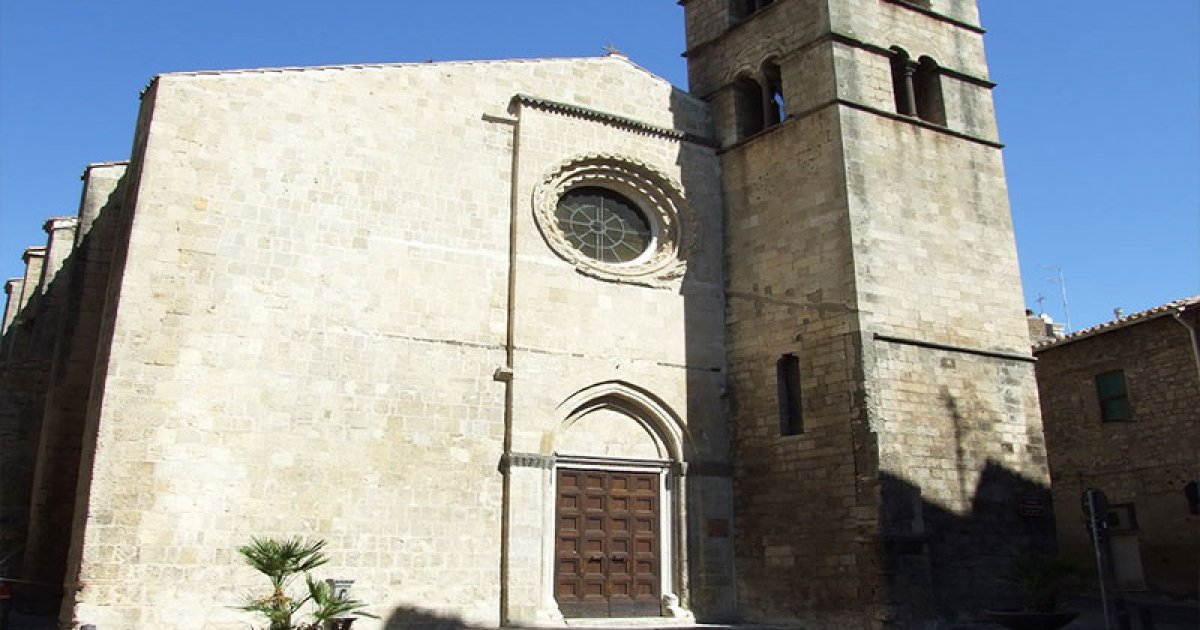CHURCH OF SAN PANCRAZIO, Presentation
 Language: English / USA
Language: English / USA
The Church of San Pancrazio, dating to the beginning of the 13th century, is one of the oldest in Tarquinia.
Now deconsecrated and used for exhibitions and events, it played an important social role in the past, when the main official ceremonies were held there.
The church is formed by a single, large quadrangular space, originally covered with two cross-vault ceilings with a complex structure, arranged crossways; the one at the front unfortunately collapsed.
The gabled facade, still visible on which are traces of a portico that ran the whole width of it, is occupied on the right by the imposing bell tower, with two rows of two-light windows, one on top of the other.
Especially interesting is the pointed-arch portal, adorned with a marble cornice with a decoration at the top made from glass tessserae, fashioned by the Cosmati family of Roman marble artists.
On the left side of the church, you can see what might initially appear to be a small portal, with a Norman-style decoration of broken lines. It is in fact an arcosolium, a recess used as a tomb commonly found in catacombs, set into the wall and topped with a niche.
Around the church of San Pancrazio, you can admire a group of imposing houses and four noble towers dating to the 12th century and subsequently joined together to make up Palazzo dei Priori. This is home to the Ceramics Museum, where you can find an interesting collection of medieval ceramics.
A little further along the appropriately named Via delle Torri, you’ll find a long square that used to be called Piazza d’Erba. Now known as Piazza Verdi, the square used to host the local market. Much of the east side is taken up by the imposing noble Palazzo Sacchetti, built in the first half of the 17th century.



